Mushrooms and toadstools are both fascinating and beautiful – some varieties looking like they’re straight out of a fairy tale whilst others can be astounding for their sheer size. Perhaps the most notable feature is the fact that although some can be cooked into delicious culinary delights, others are so deadly that they can kill within hours.
No doubt at some point in your outdoor pursuits, you’ve stopped to admire or inspect some intricate fungus emerging from the forest floor. Hopefully though, no matter how tempting it may appear, you’ve resisted the temptation to pick a few beauties to slice into your risotto!
There are many texts and field guides available to assist in distinguishing safe, edible mushrooms from the many – sometimes identical looking – poisonous ones. However, mycologist Tom May advises: “Unless you’re prepared to become an expert in mushroom identifying, then eating mushrooms you pick is not something to be done.”
Mushroom poisoning results from the ingestion of mushrooms that contain toxic substances. Mushroom toxins are secondary metabolites produced by the fungus. Symptoms can vary from slight gastrointestinal discomfort to death in a matter of days. Here are ten of the most deadly mushrooms that can be found in the U.K.

The Death cap is one of the world’s deadliest mushrooms and it is common in England. This mushroom has caused the most recorded fatalities in the UK and there is no known antidote. Death can follow within 48 hours from serious liver and kidney damage, due to ingesting the toxin ‘a-Amanitin’. As little as half a mushroom contains enough toxin to kill an adult human.
It has been said that the Death cap caused the deaths of roman Emperor Claudius in AD 54 and Holy Roman Emperor Charles VI in 1740.
The caps are generally greenish in colour with a white stipe and gills. The cap colour is variable, including white forms.
Found in broadleaved woods, it grows on the ground.
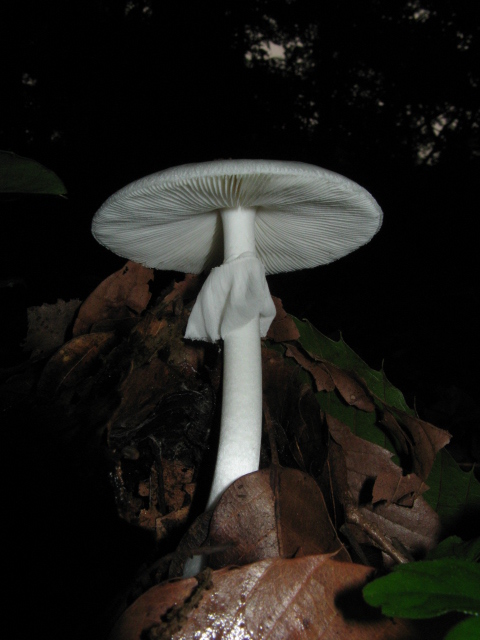
A pure white, deadly poisonous mushroom, also known as the ‘Fool’s mushroom’. It is rarer than Death Cap mushrooms, but among the most toxic known mushrooms. They can often be mistaken for button mushrooms, with young specimens often being confused with puffballs or other non-deadly mushrooms.
Like the Death Cap, the Destroying Angel also contains the toxin a-Amantin, which causes liver failure if not treated immediately.
The Destroying Angel is pure white, all the way to the gills and stipe. It measures 5 -10 cm wide and is about the same height.
Found in broadleaved and mixed woodland, especially birch woodland. It grows on the ground.
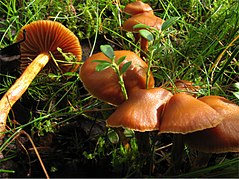
The Deadly Webcap is similar to Fool’s Webcap. The webcaps contain a poison called orellanine – a powerful mycotoxin, which is very long-lasting and often results in irreversible kidney failure.
The mushroom is generally tan brown all over, with a conical convex cap measuring 2.5 to 8 cm in diameter and 5.5 to 11 cm tall.
Found in coniferous pine and spruce woods. It grows on the ground often among heather and bilberry.
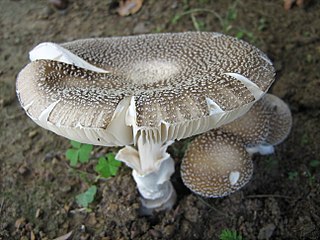
This mushroom tends to catch people out because it looks a lot like a popular edible mushroom – ‘the blusher’. It can cause diarrhoea, vomiting and severe dehydration.
Amanita pantherina contains psychoactive compounds ibotenic acid and muscimol, which can also cause hallucinations.
The cap is 5 to 18 cm wide, deep brown to hazel-brown in colour with pale spots. Its length is about 5 to 15 cm. It can have an unpleasant odour, or smell like raw potatoes.
These are found in broadleaved woods, especially beech or oak.
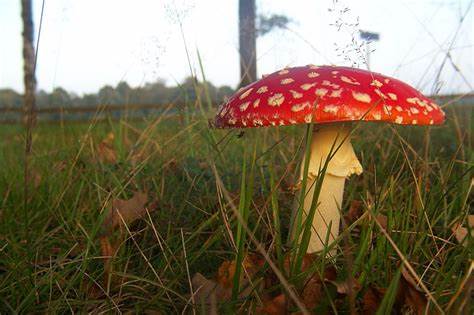
This is one of the most recognisable toadstools – it has featured in TV programmes and video games such as Super Mario Bros and is said to have inspired the magical mushroom in the fantasy novel ‘Alice in Wonderland’.
Although poisonous and causing a variety of unpleasant symptoms, deaths due to poisoning from consuming Fly Agarics are relatively rare. It contains psychoactive constituents muscimol and iboenic acid which cause hallucinations as well as other unpleasant effects.
Despite its easily distinguishable features, the Fly Agaric has several subspecies. These subspecies are slightly different, some having yellow or white caps, but they are all usually called fly agarics, and they are most recognisable by their notable white spots.
These are found in woodland and heathland on light soils among birch, pine or spruce.
An interesting fact – both the Fly Agaric (Amanita muscaria) and Panther Cap (Amanita pantherina) have been illegal to buy, sell, or possess in the Netherlands since December 2008.
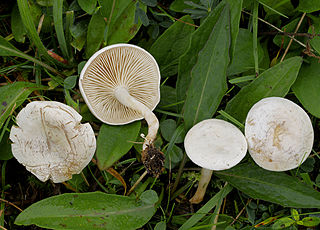
A small white funnel-shaped toadstool. Also known as the sweating mushroom, it derives this name from the symptoms of poisoning. It can often be confused with the edible fairy ring champignon. Death is rare, but ingestion can cause respiratory failure in severe cases.
The main toxin of the False Champignon is muscarine, which causes symptoms like those when nerve damage has occurred.
A small whitish mushroom, measuring 3 to 4 cm in width, a funnel shaped cap with white gills and specks of pink.
The False Champignon is found in lawns, meadows and other grassy areas.
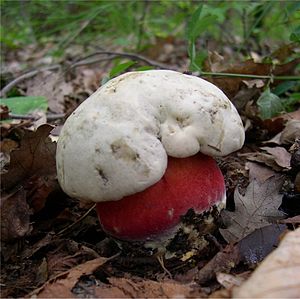
Reports of poisoning by ingesting Satan’s bolete are rare, due to its striking appearance and at times putrid smell, which discourages foraging.
Satan’s bolete contains the toxic enzyme bolesatine, causing dizziness and hypertension.
The squat, brightly coloured fruiting bodies are often massive and imposing, with a pale, dull-coloured velvety cap up to 30 cm wide and very rarely can grow up to 50 cm wide! It has yellow to orange-red pores and a bulbous red-patterned stem. The flesh turns blue when cut or bruised, and overripe fruit bodies can give out a highly unpleasant stench.
Found in broadleaved and mixed woodland.

This species is deadly poisonous. Like the Death cap, Fool’s conecap contains deadly alpha-amanitin which is highly toxic to the liver when digested. They are sometimes mistaken for Psilocybe due to their similar looking cap.
Its cap is less than 3 cm across, has a smooth brown top and is between 1 and 6 cm long.
The Fool’s conecap is found in gardens, amongst leaf litter and compost.
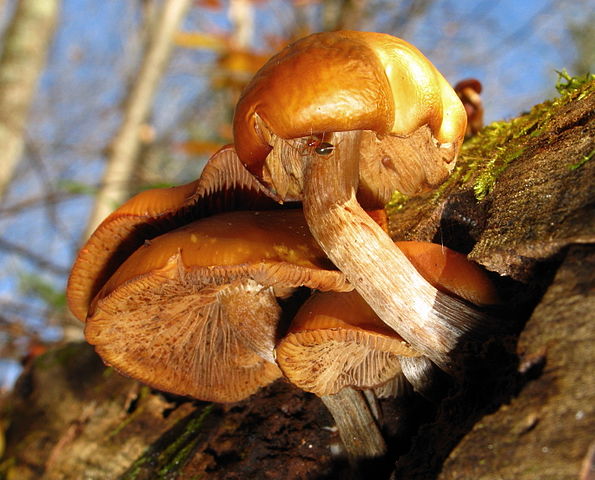
The Deadly skullcap is a small but extremely poisonous mushroom that grows in clusters on tree stumps and bark. It contains deadly amatoxins which cause vomiting, liver damage and death in rare cases, if not treated rapidly.
The species is a classic ‘little brown mushroom’ which can be easily confused with several edible species.
These are found in mixed or coniferous woods. Grows on dead and decaying wood.
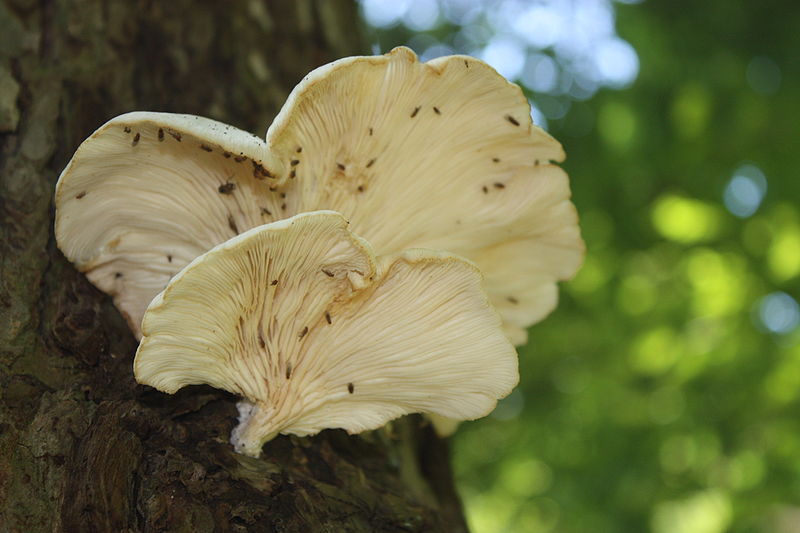
An unusual and beautiful variety, pure white and grows in clusters on decaying conifer wood. Ingestion of these mushrooms can cause permanent brain injuries and possibly death.
Angels’ wings were once generally regarded as edible, until 2011 when it was implicated in two documented outbreaks involving fatal encephalopathy and eventual death in a number of people in Japan. Most had a pre-existing liver condition. The mechanism of action for the toxicity of Angel’s wings has not been definitively established. However, there are a couple of possibilities – an unusual unstable amino acid, or toxic levels of cyanide salts.
The body begins as pure white and then form a tinge of yellow over time. The stipe is either very short or completely absent, and the flesh has a faint but pleasant smell.
Angel’s wings mushrooms are found in decaying stumps and branches in conifer woodlands.
And finally, here’s an excerpt from an article a few years back, showing the need for exercising much caution when mushroom foraging, even for those who may feel themselves an old hand at identifying the good from the bad!
An adventurous spirit, Angelo Crippa often foraged for wild mushrooms in the hills above Santa Barbara. But the 82-year-old’s lifelong hobby turned tragic when he mistakenly picked the wrong ones in a wooded park near Arroyo Burro Beach, sautéing them with a steak for what would be his last meal.
Known as “death angel” for its snow-white appearance, the fungus has deadly toxins that worked their way through Crippa’s system, sickening him and eventually causing his liver to fail.
Family members had often warned Crippa against indulging in his passion for hunting wild mushrooms, an activity he learned from his Italian immigrant parents, his wife said.
“You couldn’t tell him anything because he’d been so lucky for 82 years,” she said.
Dr. Mark Horton, the state public health chief, said Crippa’s death is a reminder that amateur collectors should never eat mushrooms they have gathered without having them thoroughly checked. “His tragic death underscores that wild mushrooms should be carefully examined and determined edible by a mushroom expert,” he said.
Problems occur when collectors use a book — or worse, another amateur’s guidance — in deciding what can and cannot be eaten, Cummings said. “For every edible mushroom, there’s a poisonous look-alike,” he said. “But in the Amanita group, it is literally playing with death.”
(Los Angeles Times, Catherine Saillant, 23th March 2009).
All images taken from Wikipedia.

Back to blogs